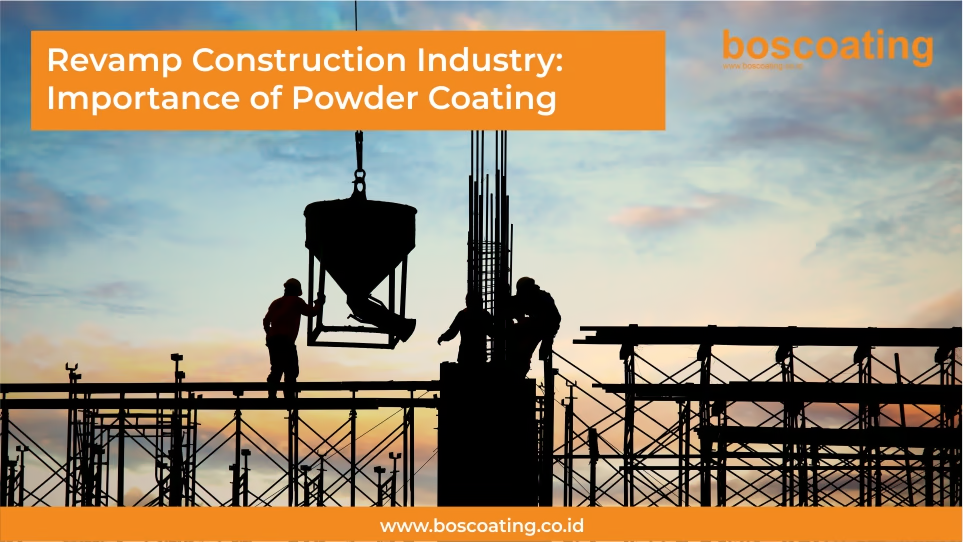Revamp Construction Industry: Importance of Powder Coating

Are you ready for a revolution in the construction industry? Look no further than the game-changing technique of powder coating. With its ability to transform ordinary surfaces into long-lasting, durable, and vividly colored finishes, powder coating is becoming an essential element in modern construction projects. By applying a dry powder to metal surfaces and then curing it with heat, this innovative process not only enhances the appearance of structures but also provides exceptional protection against wear, corrosion, and weathering.
Advantages of Powder Coating in Construction
Powder coating has emerged as a transformative technique in the construction industry, offering numerous advantages that traditional painting methods simply cannot match. One of the primary benefits is its durability. Unlike conventional paint, which can chip, fade, or peel over time, powder coating forms a tough, protective layer that is highly resistant to scratches, impacts, and harsh weather conditions. This exceptional resilience means that coated surfaces maintain their aesthetic appeal and structural integrity for much longer, reducing the need for frequent maintenance and touch-ups. This durability is particularly vital in construction, where exposure to the elements can significantly compromise material longevity.
Another significant advantage of powder coating is its versatility. The application of powder coating is not limited to metal surfaces; it can be effectively used on a variety of substrates, including aluminium, steel, and even some plastics. This versatility allows architects and builders to use it in a multitude of applications, from structural components like beams and columns to decorative elements such as railings and fencing. Furthermore, powder coating is available in an extensive range of colors and finishes, allowing for greater design flexibility. This ability to customize aesthetics makes it an attractive option for projects that prioritize not just functionality, but also visual appeal.
Cost-effectiveness is also a crucial advantage of powder coating in construction. Although the initial investment might be higher than traditional painting, the long-term savings are undeniable. The extended lifespan of powder-coated surfaces leads to reduced maintenance costs and less frequent replacements. Additionally, the efficiency of the powder coating process itself means that it can be applied more quickly than conventional paint, minimizing downtime and expediting project timelines. For construction professionals, these factors culminate in a more efficient workflow, allowing for better resource allocation and increased profitability.
Types of Powder Coating Materials Used in Construction
When it comes to powder coating, various materials can be utilized to achieve different functional and aesthetic outcomes. The two primary types of powder coating materials are thermosetting and thermoplastic powders. Thermosetting powders, such as epoxy and polyester, are the most common in construction applications. They undergo a chemical change when heated, which results in a hard, durable finish that is resistant to solvents and high temperatures. Epoxy powders are particularly well-suited for environments that require high corrosion resistance, making them ideal for industrial applications.
On the other hand, thermoplastic powders, which include nylon and polyvinyl chloride (PVC), can be remelted and reshaped upon heating. This characteristic allows for repairs and re-coating without the need for complete stripping of the existing finish. While thermoplastics are less commonly used in heavy construction, they are gaining popularity for specific applications, such as in decorative elements or where flexibility is necessary. The choice of powder type largely depends on the specific requirements of the project, including exposure conditions and desired finish characteristics.
Another noteworthy category of powder coating materials includes specialized formulations, such as anti-graffiti and anti-microbial powders. Anti-graffiti powders are designed to repel paint and other substances, making it easier to maintain surfaces in urban environments that are prone to vandalism. Similarly, anti-microbial powders incorporate additives that inhibit the growth of bacteria and mold, proving beneficial in healthcare and food service settings. As the construction industry continues to evolve, the development of such specialized powder coatings reflects the growing demand for tailored solutions that meet specific project needs.
Examples of Construction Applications Utilizing Powder Coating
Powder coating finds application in a wide range of construction projects, showcasing its versatility and durability. One of the most prominent uses is in architectural elements, including window frames, doors, and railings. These components not only need to withstand the elements but also must enhance the building's aesthetic appeal. Powder coating allows for a variety of colors and finishes, ensuring that these elements can complement the overall design while providing long-lasting protection against corrosion and wear.
Another significant application of powder coating is in the manufacturing of outdoor furniture and fixtures. Items such as benches, tables, and light poles require coatings that can endure exposure to sun, rain, and snow. Powder-coated finishes provide an excellent solution, offering a robust layer of protection that can resist fading and chipping. Additionally, the ability to create vibrant colors and unique textures makes powder-coated outdoor furniture not only functional but also visually appealing, encouraging its use in parks, gardens, and commercial spaces.
Moreover, powder coating is increasingly utilized in structural applications, such as steel beams and supports. In high-rise buildings and industrial facilities, steel structures are often exposed to harsh conditions, including moisture and pollutants. By applying powder coating to these components, builders enhance their resistance to corrosion and extend their service life. Furthermore, the application of powder coating can also contribute to improved energy efficiency by providing insulation properties, thereby reducing heating and cooling costs in the long term. The wide array of applications demonstrates how powder coating is becoming integral to modern construction practices.